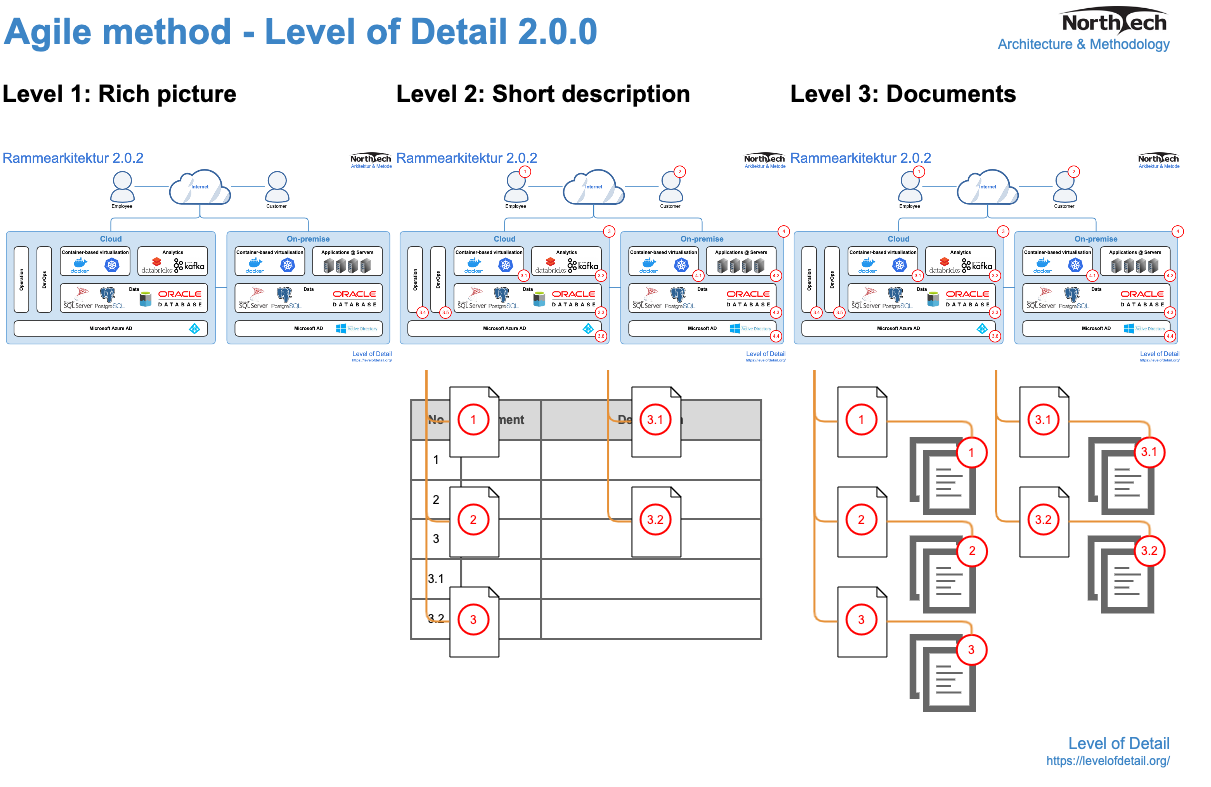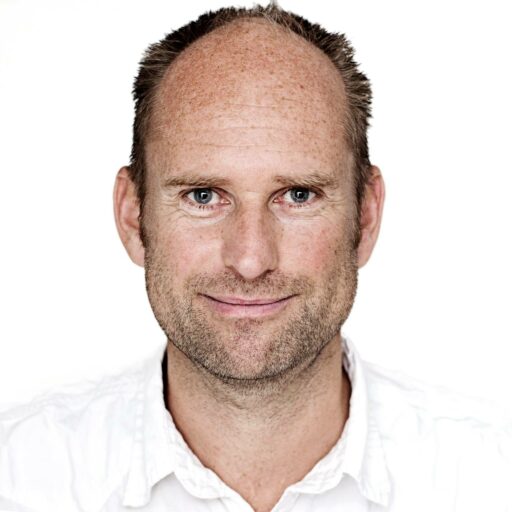Most methods recommend the use of rich pictures or rich visualisation in the beginning of a new project to achieve a common understanding. The methods don’t describe a systematic approach on how to do rich pictures and it is hard to unify that across an organisation without some help. NorthTech has created a small agile method on how to systematic work with rich pictures and we have chosen to call this Level of Detail. This mini agile method divides presentation and understanding into 3 levels. Level of Detail becomes the link that binds ideas, understanding, design and accomplishment. Level of Detail follows a project from the cradle to the grave as the common overview – internal and external in the project group.
NorthTech has since the formation in 2003 worked with this understanding of rich pictures and has through the years refined Level of Detail to be used from top to bottom in an organisation to create the needed overview. Level of Detail originate in it-architecture, but can absolutely also be used in non it-oriented projects.
Level of Detail can be used as an add-on to the established methods for project management, it-architecture and it-development such as Prince2, ITIL, Statens IT-projektmodel, Fællesoffentlig Digital Arkitektur (FDA), Scrum, Scaled Agile Framework (SAFe), Unified Process (UP/RUP), Objektorienteret analyse & design, TOGAF, Extreme programming, Kanban, etc.
Level of Detail embraces change and ensures cooperation with offset in the agile mindset – https://agilemanifesto.org/
Level of Detail 1 – Rich picture

Level of Detail 2 – Short description
No
Element
Description
1
Rich picture
The rich picture gives a common understanding on the subject that a group of people works on. The rich picture is the classical picture that is always drawn on a board or a piece of paper on all meetings. The goal of level 1 is to digitalise that rich picture so that it can be reused and shown to avoid a restart each time. The rich picture must be the central instrument when communicating both internal and external in the group. Changes will by time be introduced in the rich picture and it is important to assess the size of the change. Changes are assessed with the help of semantisk versionering. This means that it needs to be decided if it is a major change where the goal has fundamentally changed, or a minor thing has been added or removed, or some small error has been corrected (patch).
It is recommended that the first version of the rich picture is created on a workshop for all members in the group. Everyone in the group can at the workshop enrich the rich picture at a board. The first version (1.0.0) of the rich picture is an image of the board (use your smart phone) that must be shared on a common place where all in the group have access. E.g. a WKI.
2
Short description
A drawing speaks more than a 1000 words, but is can also be interpreted in a lot of ways. Numbers need to be attached for each element, to avoid confusion about the individual elements in the rich picture, so that they can be uniquely referenced – preferred in a clear red color as in the rich picture above.
The short description can be handled as simple as this table with a column for the level (no), the name of the element in the rich picture and the short description that sets the element into perspective on how to interpret.
It is recommended to start simple and by time create a template that is suited for a given groups/organisations needs. A WIKI can for example be used with an interactive rich picture where each element has its own page.
3
Documents
The common frame based on level 1 and 2 can now be used to attach the needed documents. The group can thereby directly see the attached documents in relation to the rich picture. The documents are referenced in the short description – level 2.
An example of Level of Detail 3 – Documents is to link to the Level of Detail poster.
Level of Detail 3 – Documents
Level of Detail 1 – rich picture and 2 – short description – can live in a document, but it is a good idea, when you get to Level of Detail 3 – ducuments, to use an on-line WIKI (https://en.wikipedia.org/wiki/Wiki). The benefit of using an on-line WIKI is that the team and others easily can find and shate information. Typical Level of Detail 3 documents are, standards you need to use, protocolls for integration to this or other systems, lawful stuff you need to comply to, business processes, etc.
For more information contact Rolf Wiegand Storgaard @ northtech.dk at rolf@northtech.dk or +45 26 18 86 26.

NorthTech can give you an introduction and a curse to Level of Detail or develop Level of Detail for a given project.
